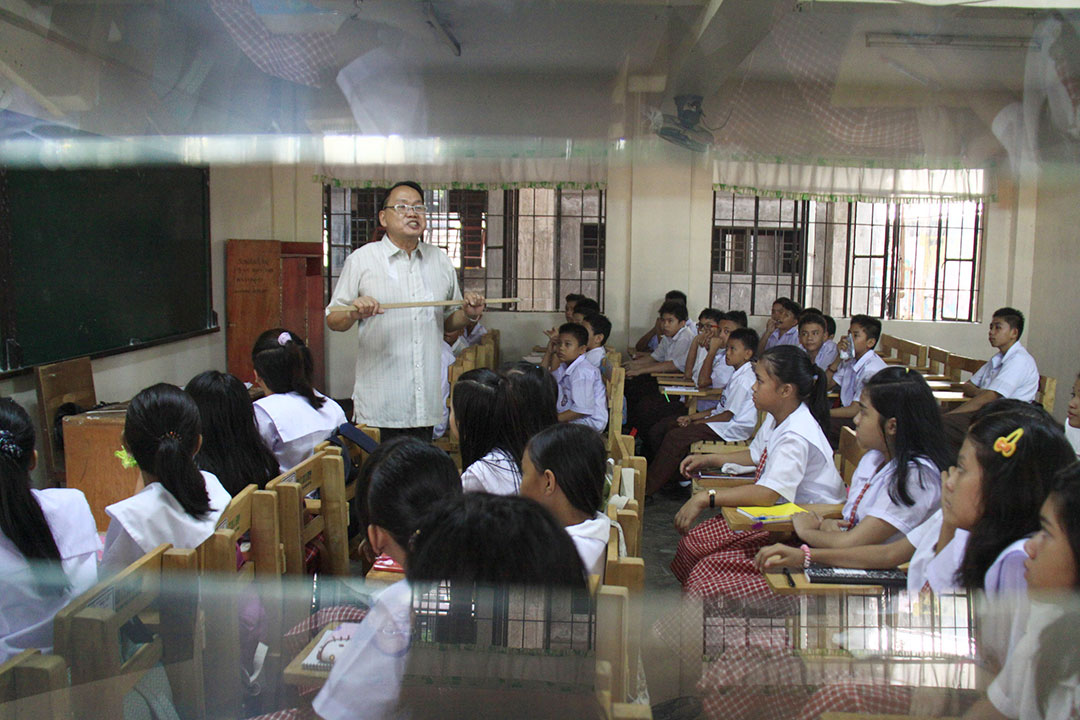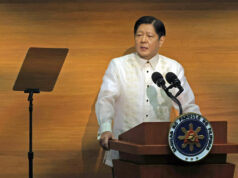Marcos says K to 12 program failed, up to Congress whether to scrap it

By Chloe Mari A. Hufana and Adrian H. Halili, Reporters
PRESIDENT Ferdinand R. Marcos, Jr., on Wednesday said the K to 12 program has failed to produce work-ready senior high school graduates, as the Philippines rolls out the pilot of a revised curriculum for school year 2025-2026.
In a video posted on his social media accounts, Mr. Marcos said the program, which started more than a decade ago, has failed to provide any real advantage to graduates.
“It’s costing parents more because two additional years were added,” he told News5 at One PH. “They still have to pay for enrollment, buy a lot of school supplies, purchase books — everything.”
“Yet after 10 years, there’s no real advantage,” he added.
He echoed the frustrations voiced by lawmakers who are calling for the abolition of the mandatory senior high school system under the K to 12 program.
The President said the decision to amend or repeal the K to 12 law rests with Congress.
Employers still prefer college degree holders over K to 12 graduates, said Maria Ella Calaor-Oplas, an economics professor at De La Salle University in Manila.
“There is still preference for degrees, even if it’s not necessary and could be done by K to 12 graduates,” she said in a Facebook Messenger chat. “Senior high school graduates are ready if job opportunities for them are available.”
The Department of Education (DepEd) is rolling out the pilot of a revised K to 12 curriculum this school year that updated the senior high school program.
DepEd is implementing the pilot program in 889 schools across the country, 12 years after the K to 12 system was enacted through Republic Act No. 10533 or the Enhanced Basic Education Act of 2013.
The program, which extended the country’s basic education by two years, has been criticized due to inadequate funding, the added financial burden on families, subpar educational outcomes and questions about whether senior high school graduates are job-ready.
Mr. Marcos said his government is working with the private sector to enhance the K to 12 system and address the issue of skill mismatch.
“But while the law still mandates K to 12, what I told [Education] Secretary [Juan Edgardo M.] Angara is that we should significantly improve the program while it’s still in place,” he said in mixed English and Filipino.
“Because what we often hear is this issue of mismatch — ‘my skills aren’t employable,’ or ‘I trained for this, but that kind of worker isn’t needed.’”
“We’ve partnered with the private sector and asked them: ‘What skills do you need? What kind of workers are you looking for so they can be employed by your company?’” he said.
“In fairness, the private sector went a step further. They said: ‘Do you want us to run the training programs? And once they complete the training, we’ll hire them’ because the training is exactly what we need,’” he added.
Mr. Marcos said the government is also partnering with the private sector to help fix the country’s severe classroom shortage.
DECADES OF NEGLECT
“If the government were to do it alone, we wouldn’t be able to accomplish much,” he said. “But to their credit, the private sector has been very cooperative — they’re willing to invest and genuinely eager to help.”
He also expressed frustration over the poor state of the public school infrastructure, which he attributed to decades of neglect and underinvestment in the education sector.
“Can you imagine that we’re lacking 160,000 classrooms? How did that happen? It was simply ignored,” he said. “Education was completely neglected. That’s what happened. There was no effort to strengthen the system.”
He also lamented the country’s declining performance in key subjects like science, technology, engineering and mathematics (STEM), which he said reflects the long-term consequences of neglect.
“Our students are falling behind in STEM. Many are struggling even with basic reading skills,” he added.
To help reverse the trend, the President said the government is improving the welfare and capacity of public school teachers, addressing longstanding issues such as delayed salaries and administrative overload.
He added that a major retraining and upskilling initiative is under way to help educators keep pace with modern teaching tools and methods.
“We’ve introduced a retraining and re-education program for our teachers because so much has changed,” Mr. Marcos said. “There’s new technology they need to learn. Supporting teachers — that’s our top priority.”
A January 2025 report by the Second Congressional Commission on Education (EDCOM 2) warned about the dire state of basic literacy in Philippine public schools, with students falling four to five years behind the expected reading proficiency for their grade levels.
EDCOM 2 recommended a “teach-at-the-right-level” approach, tailoring instruction to students’ actual learning needs rather than their age or grade. It also sought stronger support from DepEd in enforcing remedial and foundational programs.
Amid a persistent learning crisis, the government fell short of its target to add 20,000 teachers for the school year, managing to recruit only 16,000.
It is also seeking 10,000 additional administrative assistants to support public schools as they handle accounting, paperwork, documentation and other matters.
Meanwhile, EDCOM 2 said DepEd should consider population growth, vulnerabilities, projected deterioration, and available private school capacities in addressing the classroom backlog.
“By looking at these factors collectively, we can diversify our interventions in addressing school congestion, break down silos in resourcing and ensure that our efforts directly support the improvement of learning outcomes of our students,” EDCOM 2 Executive Director Karol Mark Yee said in a statement.
Earlier, the Education department said it could take 55 years to bridge the country’s 165,000 public school classroom backlog.
Under the 2025 budget, DepEd was given P28 billion for basic education facilities, including P7.18 billion for the construction of new kindergarten, elementary and secondary school buildings. Congress also allotted P6.13 billion for the school repairs.
EDCOM 2 Co-Chairman and Senator Sherwin T. Gatchalian is pushing public-private partnerships (PPP) to fix the shortage.
“One strategy that I have been pushing is the implementation of a counterpart program, where local government units (LGU) and the National Government share the cost of constructing new classrooms,” he said in the same statement. “This way, we can have several LGUs building classrooms simultaneously.”
Education Secretary Juan Edgardo M. Angara on Monday said they might pursue a PPP to fast-track the construction of about 105,000 classrooms.
Mr. Gatchalian also pushed the expansion of state assistance to students and teachers in private schools.
“We cannot go about our business-as-usual approach to address the country’s classroom shortage. We need to be innovative in implementing multiple solutions,” he added.



